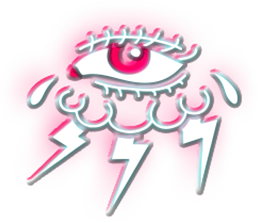Oxytocin: The Molecular Maestro of Love and Labor
Buckle up, hormone enthusiasts! We’re about to take a wild ride into the world of oxytocin, the “love hormone” that’s been playing Cupid in our bodies since the dawn of mammalian evolution. This tiny peptide packs a punch that would make even Hercules jealous! Picture this: a molecule barely 1007 Da in size, strutting around your body like it’s the director of a rom-com, a labor ward, and a milk bar all rolled into one. That’s oxytocin for you – the nonapeptide with a heart of gold and the strength of a thousand hugs.
Structure and Synthesis
Hold onto your peptides, folks! We’re about to dive deep into the molecular magic of oxytocin, the tiny titan that’s been pulling our heartstrings and pushing out babies since mammals first said “I love you” (or whatever the prehistoric equivalent was).
Oxytocin isn’t just any old hormone – it’s a nonapeptide superstar, a molecular pretzel, with nine amino acids twisted into a shape that would make a contortionist green with envy. Its sequence reads like a secret code of love: Cys-Tyr-Ile-Gln-Asn-Cys-Pro-Leu-Gly-NH2. If that sounds like alphabet soup to you, just imagine it as nature’s own chemical cupid, with each letter representing a different amino acid. It’s got a disulfide bridge that would make any structural engineer proud, linking those cysteine residues like a molecular love lock. But wait, there’s more! This molecular Casanova has a few tricks up its sleeve:
The Amide Finale: That “NH2” at the end? It’s not just for show. Oxytocin’s C-terminus has been converted to a primary amide, giving it that extra oomph in the body.
The Cysteine Love Knot: Two cysteine amino acids in this peptide are joined by a disulfide bridge, creating a loop that’s crucial for its biological activity. It’s like a molecular friendship bracelet, but way more important.
Evolutionary Remix: While most mammals stick to this classic formula, some New World primates like marmosets and tamarins have their own oxytocin variants. It’s like nature’s own remix, with Pro8-OT, Ala8-OT, Thr8-OT and even a Val3/Pro8-OT for those extra funky monkeys.
Production Central: This love potion is brewed in the hypothalamus, specifically in the magnocellular neurosecretory cells of the paraventricular and supraoptic nuclei. These neuronal superstars send their oxytocin-filled axons on a journey through the infundibulum to the posterior pituitary. There, oxytocin is stored in Herring bodies at the axon terminals, ready to be released into the bloodstream like confetti at a parade when it’s time for some bonding, birthing, or breastfeeding.
Production and Release
Functions (Hold onto your hearts, folks!)
Childbirth: When it’s time for baby to make their grand entrance, oxytocin steps up as the director of labor. It tells the uterus to contract with the precision of a drill sergeant, while also boosting prostaglandin production for extra oomph.
Breastfeeding: Post-birth, oxytocin switches hats to become the milk maestro. It stimulates milk let-down faster than you can say “feeding time”.
Stress Relief: Feeling frazzled? Oxytocin’s got your back. It’s nature’s own chill pill, helping to reduce stress and promote calm.
The Plot Thickens
But wait, there’s more! Oxytocin isn’t content with just running our love lives and labor wards. Oh no, it’s got its tentacles in everything from pain modulation to appetite regulation. It’s even being studied for its potential in treating conditions like autism and anxiety disorders.
So, there you have it – oxytocin, the molecular maestro orchestrating everything from labor contractions to love connections. It’s in your brain, your blood, and maybe even in your future as a therapeutic wonder drug. It just goes to show, sometimes the biggest impacts come in the smallest packages! Remember, the next time you feel all warm and fuzzy inside, you can thank this tiny molecular matchmaker. Oxytocin: making life a little more lovable, one peptide at a time!
Oxytocin: The Biochemical Bond Between Dogs and Humans
Hold onto your leashes, folks! We’re about to dive into the tail-wagging world of oxytocin, where dogs and humans bond in a biochemical love fest that would make even Cupid jealous.
Picture this: You come home after a long day, and there’s Fido, all wiggles and wags. You reach down to pet that furry head, and BAM! Your brain’s oxytocin factory kicks into high gear. But here’s the kicker – it’s not just you getting a dose of the “love hormone.” Your canine companion is also riding the oxytocin wave.
This isn’t just some warm and fuzzy theory. Scientists have actually measured oxytocin levels in both dogs and their humans before and after petting sessions. The results? Both species showed a surge in oxytocin, creating a feedback loop of fuzzy feelings. It’s like a biochemical high-five between species! But wait, there’s more! This oxytocin party isn’t just about feeling good. It’s got some serious health benefits:
Stress Buster: Oxytocin is like nature’s chill pill, helping to lower blood pressure and decrease levels of the stress hormone cortisol.
Bonding Booster: Oxytocin strengthens the connection between you and your furry friend.
Heart Helper: All that oxytocin-induced calm can be good for your ticker, potentially contributing to cardiovascular health.
And here’s a mind-blowing tidbit: Even thinking about your dog can make your oxytocin levels rise. So next time your boss catches you daydreaming about Rover, just tell them you’re engaging in some hormone-based health maintenance!
So, there you have it, folks. The next time you’re petting your pooch, remember: you’re not just giving belly rubs, you’re engaging in a sophisticated biochemical exchange that’s been millions of years in the making. Who knew “fetch” could be so scientifically fascinating?


Leave a Reply